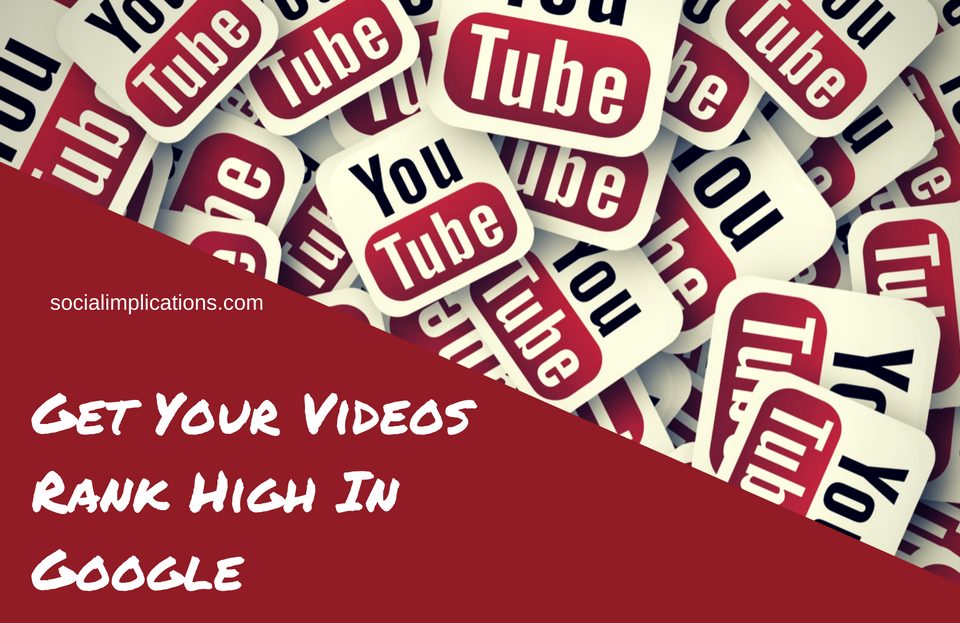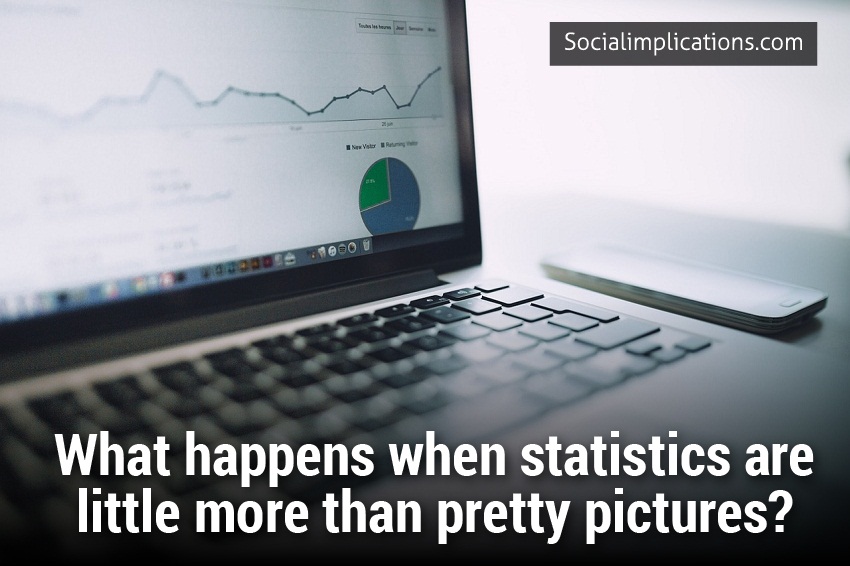The easiest, by far the most natural (and for many people) the most effective way to succeed in social media marketing is by creating and distributing great content. Be it a viral content campaign, social media outreach or social media contests, content comes first.
Content is the driving force behind any successful website or social media marketing.
It is almost always easy to tell great content from a mediocre article – but how much do you really know about *great* content? Here’s the three R’s of the great content I have come to understand:
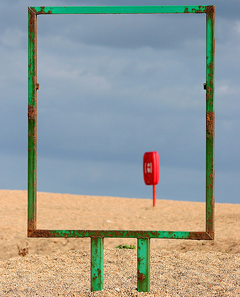 1. Reduce
1. Reduce
… or Get Focused
Let’s face it, *really* great content is something that happens very seldom – even for the best of us. You can write often and be very good at it – but let’s face it, it is hard to surprise anyone with good content today.
The Web is over-saturated with good content (as well as with the bad content, of course). If you are really willing to stand out, you need to brainstorm something different, unique and, well, unseen (which obviously takes enormous amount of time, inspiration and work)
I don’t mean to say that you only need to create *great* content – don’t get me wrong! Unless you write often and experiment with different styles and approaches, you are not going to learn to produce something really awesome.
You should definitely write a lot, try different ways to promote what you write and listen to what people are talking back – but invest a lot of time, effort and money only in really *great* content because it happens once in a lifetime and *great* content is what will make a difference.
So just accept it: you (may) write well but not every piece of yours is “worth” to be promoted: wait for the real one. Let it be your best bet. Get focused.
To help you out: Here’s a great tool that will suggest great content ideas as well as help you make the most of which one. Text Optimizer is a semantic search tool that develops each content idea for you to create an indepth copy:
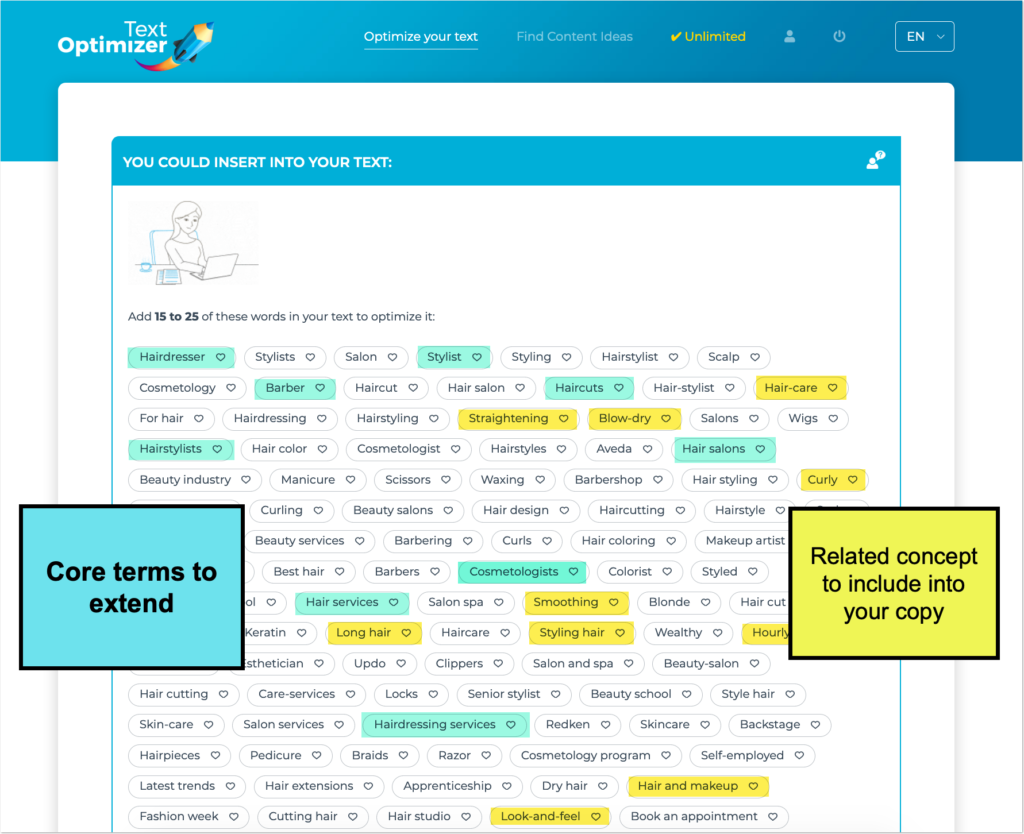
 2. Release
2. Release
… or Let it Go
The Golden rule of *great* content that I have come to understand (which was not easy to do by the way) is:
If you love it, let it go.
You can spend days and months wrecking your head over how you can stop scrapers from stealing your articles, how you can prevent thieves from copying-pasting your content and how to keep random reckless surfers from downloading your images, reports or tools and sharing it further without giving you any credit.
You can focus all your efforts on protecting your content from being stolen… and you will still fail. If your content is good, it is most likely to be popular. If it is popular, more and more people will be stealing it from you (either recklessly or deliberately) – and you will never be able to control that. This is how the (social) Web works – you can’t control that.
If you can’t prevent people from stealing your content, benefit from them reusing it. Make your content easy to embed and re-blog and promote your brand through embedded content.
Let people download, share and exchange your content. Let them “steal” the best parts of it and embed it to their sites and social media profiles. Let people know you by that content.
Instead of trying to stop people from spreading your content, encourage them to use your content but on your own terms:
- Here are RSS feed plugins to enhance and promote your feed
- Allow to use your visual content under Creative Commons license (To encourage people cite you as author for more exposure and visibility)
- Add all sorts of sharing buttons to encourage users to spread your content.
- Experiment with various contextual CTAs like web push notifications or smart chatbots.
Keep an eye on how your content is performing using tools like Finteza. The tool allows you to filter data to any source and analyze how that traffic is performing through your conversion funnel:
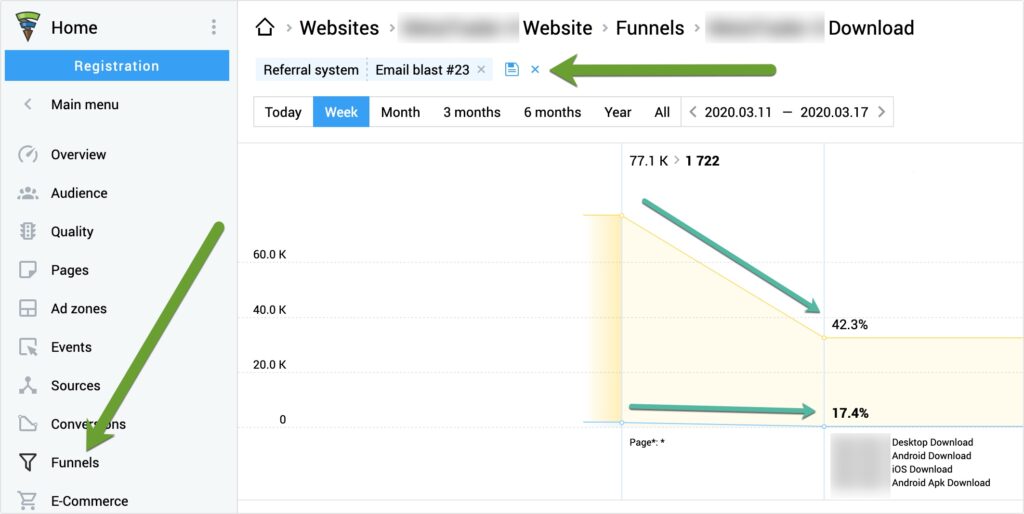
 3. Re-package
3. Re-package
… Or Give it a Second Life
Great content doesn’t have to live only once. Instead, you can expand its reach and popularity even further by re-packaging it and letting people re-craft it multiple times.
- Does your article outline a detailed step-by-step tutorial? -> Create a flow chart and let people download it for further reference.
- Does your article include a lot of numbers, rules or tips? -> Create a cheatsheet and let people print it to always have it by hand.
- Does your article include a lot of beautiful images or photos? -> Create a slideshow and let people download it and enjoy whenever they are offline.
One of the easiest ways to recycle text content is to turn it into videos. Tools like this Youtube Video Maker allows you to easily convert any text article into a professional video:
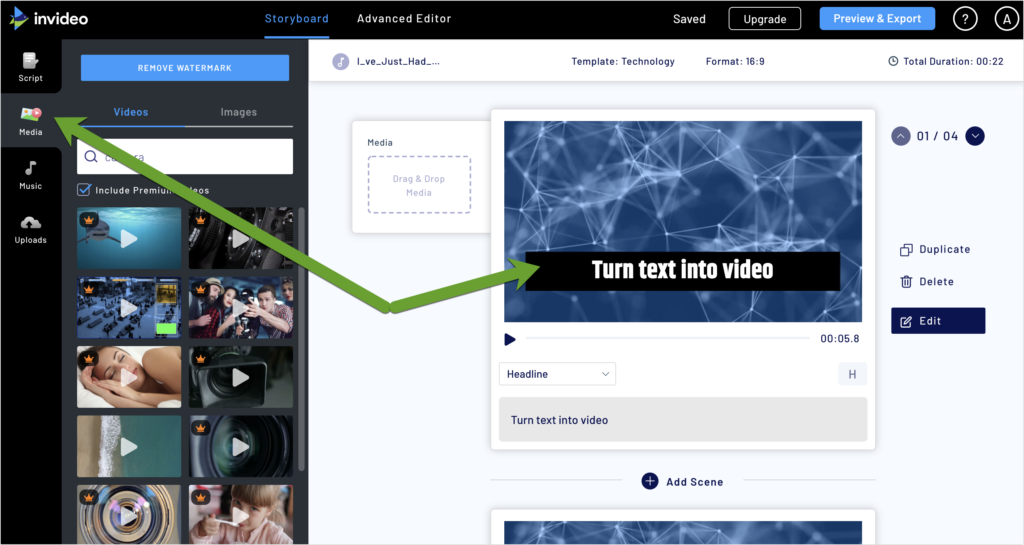
Always keep diversifying!
Don’t just use the same recycling tactics over and over again. Keep trying new formats! Animated GIFs, infographics, micro-videos, etc. – there are many content formats to experiment with. Live videos offer lots of recycling opportunities. You can broadcast them to multiple channels, turn them into text by transcribing, slice them into mini interviews, etc.
According to Megaphone Marketing, live videos offer great collaboration opportunities as well:
Live videos get six times more interactions than regular videos, so it’s bound to be seen by more of your ideal audience. Team up with a relevant brand with a strong follower base for a dual live stream to quickly grow your followers and engagement.
Think about the huge benefits content re-packaging opens up for you:
- Every piece of downloadable content encourages people to take your “brand” with them whenever they go offline, travel or go on vacation;
- All alternative types of content can be further promoted via high-traffic content-based social media networks (which will bring you additional links, traffic and exposure):
- Promote your cheatsheets at Scribd;
- Promote your slideshows at SlideShare;
- Promote your videos on Youtube;
- Promote your images on Flickr, etc, etc.
- Downloadable content (like a whitepaper or an eBook) prompts users to share your content (via email) with co-workers and friends.
Are you making the most of your great content? Share your tips!



